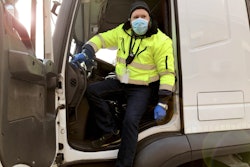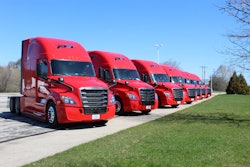Fleets often use technology platforms that focus the attention of managers and drivers on pulling the fuel efficiency of the lowest performers up to the fleet average. TruckLabs CEO Daniel Burrows said this strategy often pits apples against oranges, and for drivers it's no fun playing a game they know they can't win.
"People like to engage in goals when they're achievable and, with some focus, they can get some early wins. If you're saying, 'I'm pulling 7 miles per gallon and the goal is 9 miles per gallon,' you're like, 'There's no point. I'm nowhere near that,' and you disengage," he said. "Say you've got one driver who's an excellent driver but his mpg looks really low," Burrows continues. "Well, it turns out he's an excellent driver and he gets heavy loads over the Rockies all the time and he's doing really well to hit 6.5 miles per gallon. It's like 'well done. You should have been getting around 5 (mpg).'"
Setting well-informed goals is therefore a critical component to prevent driver disengagement. TruckLabs' TripDynamics platform uses telematics, machine learning, and cloud computing to bridge the gaps, he said, by creating a more fair and competitive means of measuring fuel efficiency associated with driver behaviors.
"We understand the terrain, the equipment, the weather, the load you're pulling, and we put you against a sort of cohort of other drivers that's a fair measurement," Burrows said. "You're not being compared against a flat, light load. We actually compare like-to-like."
Today’s driver mpg performance measurement approaches often lack comprehensiveness, Burrows said. They often do not account for variables like weather, traffic, terrain, and other driving conditions, nor do they provide periodic feedback such as every week or month after drivers have completed extended routes.










